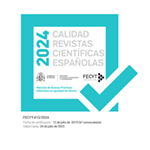Body maps as a digital social research technique
Abstract
Fat studies must implement research techniques that enable the researcher to access discourse levels that go beyond the verbal. The qualitative technique of digital body mapping is an appropriate tool to bring us closer to the body, allowing all participants in the research process to engage in self-reflective exercises. Adapting techniques commonly carried out in physical spaces to online contexts is a methodological challenge that expands the dimensions of analysis by crossing and blurring the boundaries between the physical and the digital. In this article, the digital body mapping research technique is explored by providing a definition of the technique, presenting a genealogy of similar techniques, and finally, a reflection on the type of results this technique can obtain.
Downloads
Publication Facts
Reviewer profiles N/A
Author statements
- Academic society
- N/A
- Publisher
- Grupo de Investigación Cultura Digital y Movimientos Sociales. Cibersomosaguas
Article download
License
In order to support the global exchange of knowledge, the journal Teknokultura is allowing unrestricted access to its content as from its publication in this electronic edition, and as such it is an open-access journal. The originals published in this journal are the property of the Complutense University of Madrid and any reproduction thereof in full or in part must cite the source. All content is distributed under a Creative Commons Attribution 4.0 use and distribution licence (CC BY 4.0). This circumstance must be expressly stated in these terms where necessary. You can view the summary and the complete legal text of the licence.















